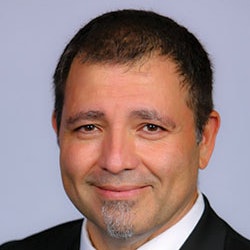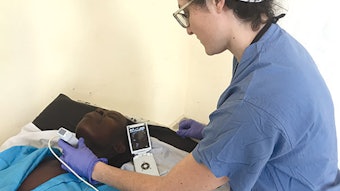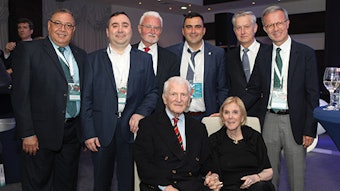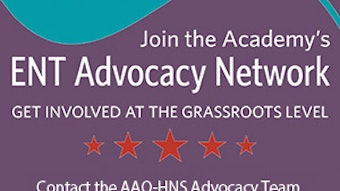The best and brightest
Winter brings otolaryngology residency (and fellowship) interview season. You know the drill: letters of recommendation, travel snafus, origin stories, polished (and not so polished) answers to standard questions, and on and on.
 Albert L. Merati, MD
Albert L. Merati, MD
AAO-HNS/F Past President
Regardless of your career path, practice type, subspecialty, demographics, or geographic region, we all have one thing in common: We all trained in otolaryngology residency. Of course, many of our AAO-HNS members had excellent training in other countries or journeys that didn’t include the winter army of dark-suited applicants parading through department conference rooms and hospital hallways. However, the majority of you were that hopeful applicant at some point.
What are our responsibilities in screening and interviewing applicants? I try to find the person in the paperwork—who are they? What compels them to pursue this career? It is crucial to be aware of our own biases during this process. I don’t mean the grossest errors of gender bias, but the subtle language differences many of us use when talking to applicants. Review your letters of recommendation. Are there any patterns in tone or vocabulary that strike you?
What about the pool of applicants in general? You might recall that the single liveliest ENTConnect Open Forum (http://entconnect.entnet.org/home with member sign-on required) discussion this year was about the 2017 and 2018 otolaryngology match during which the number of applicants dropped and 10 to 15 otolaryngology programs had positions that were initially unmatched.
What do you want written on your tombstone?
My friend and former partner Daniel E. Bruegger, MD, would ask the interview candidates, “When it is all said and done, what do you want written on your tombstone?”
While the occasional smart-alec would answer “pepperoni,” the moments of consideration and reflection have been remarkable. When I contacted Dan recently to confirm this memory, he reminded me that he himself had borrowed it from Charley Norris, longtime chair of the KU Otolaryngology Department in the 1980s.
Do you have a few favorite interview questions? Send them to me at bulletin@entnet.org. Perhaps I will feature a few of these in a future column.
Spoiler Alert: The applicants are back and strong as ever this year.
My unscientific poll of colleagues from programs around the country reveals that applicant numbers are up 20 to 40 percent this year over last year. The reasons why there was a dip in recent years are important to analyze and understand. Generational changes? The infamous program-specific paragraph? Are we perceived as too competitive?
The reasons why this was such a hot topic to otolaryngologists deserve some attention as well. Why does it matter if we get two applicants for every spot? Does this appeal to some sense of elitism or exclusivity in ourselves? I have been guilty of this feeling at times. Have you?
Whether the 2017-2018 match years were an exception, we can’t take student interest in otolaryngology for granted. One of our AAO-HNS initiatives for 2019 and beyond touches on this issue, joining energy from every corner of otolaryngology to reaffirm our identity and role in medicine, in medical training, and in our communities. Local leaders, not just among our academic programs, but those stepping up through our Board of Governors and component societies will have the support of the AAO-HNS in local otolaryngology interest forums that will begin to roll out in 2019.
The new AAO-HNS Student Programs feature information about the field and the match process to complement the efforts of our colleagues who are also part of the Society of University Otolaryngologists, a superb organization. The new medical student membership category has blossomed in popularity and is a great place for aspiring otolaryngologists to get involved, get connected, and begin their careers in our amazing specialty.
Whether you are doing community outreach at your local high school, advising a neighbor college student, or greeting a dark-suited otolaryngology applicant, we are all at our best when sharing the joy and commitment we have for our careers. Otolaryngology is changing in healthy ways; we should look like the patients we care for and the communities we serve.
Let’s have leadership from all pathways in otolaryngology—show yourselves and your passion for the field. The applicants are superb, the field is full of wonderful and amazing people, and the future is indeed bright.













